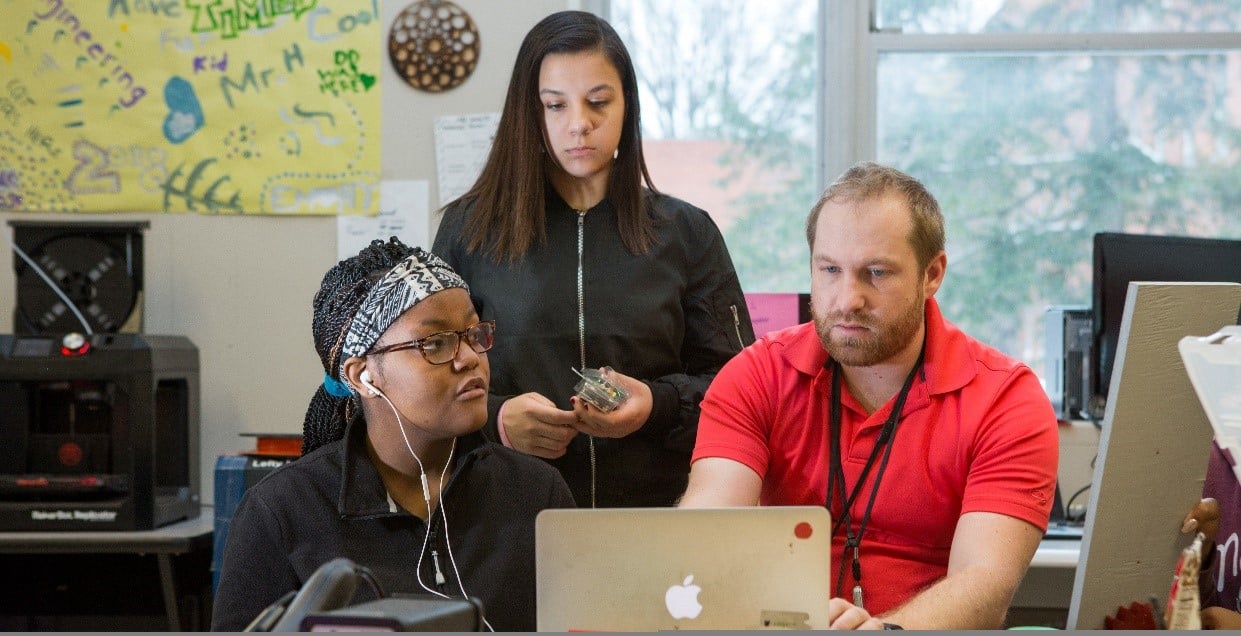23 Apr2024
How Does Your Preparation Program Compare?
By Teresa Foulger
AACTE has long emphasized the need for a more robust integration of technology in teacher preparation programs. This vision involves a shift beyond mere coursework on educational technology to a comprehensive, program-wide infusion of technology, helping candidates graduate from programs as technologically proficient teachers. How does your preparation program compare to the literature on technology infusion?
The Vision of Technology Infusion

QR Code to Survey
Technology Infusion represents a holistic strategy to empower preservice teachers with high-level proficiency with the digital tools necessary for PK-12 students to engage in modern-day learning experiences. This approach ensures that candidates benefit from continuous, developmentally appropriate exposure to technology’s potential to be seamlessly addressed throughout their training – including methods courses and clinical experiences. By sharing the responsibility of teaching the technology integration curriculum, faculty members and PK-12 mentors can support the necessary teaching, modeling, and support for candidates’ growth in teaching with technology across faculty members and PK12 mentor teachers, theoretical foundations for technology integration, effective teaching practices, and policy that is essential for candidates to develop self-efficacy for teaching with technology as they graduate.
10 May2021
By Mark J. Hofer, Teresa Foulger, Kevin J. Graziano, John K. Lee, Denise Schmidt-Crawford and David Slykhuis
AACTE is partnering with the Society for Information Technology and Teacher Education (SITE) to provide AACTE members with a reduced rate for the Teacher Educator Technology Competencies (TETC) professional development modules. Learn more about the series of self-paced online courses from the TETC research team.
Looking back, it seems as if we have been on an almost impossible journey. In response to the emerging COVID-19 pandemic in March 2020, we faced the closure of campuses and an abrupt and extraordinarily difficult transition to remote teaching and learning. Given the relational and experiential nature of teaching, remote learning has been particularly difficult for teacher preparation programs. We found it extraordinarily difficult to replace the modeling and mentoring that our pre-service teachers needed using remote experiences. Working from home and balancing various responsibilities including caring for loved ones and supporting our own children’s learning only added to the challenge. Undoubtedly, this has been one of the most challenging times many of us have ever experienced.
And yet, despite all this, there have been some bright spots. Faculty have explored new ways of guiding learning, developed a range of new skills with educational technologies, and were reminded of the value and importance of deep human connection in teaching and learning (Ferdig et al., 2020). Some faculty have even reported that they are planning to carry over aspects of remote teaching when they transition back to the “normalcy” in our schools and classrooms; whatever that will be (also, see these hopeful posts on the AACTE blog, Clausen, et al, 2021; Hyler, 2020; Slykhuis, 2020).
27 Aug2020
By Arlene Borthwick, Teresa Foulger and Kevin Graziano
Considering the ramped-up emphasis on online and remote learning, deans, department chairs, and their faculty are taking a new look at learning goals and related curricula in preparation programs to assure teacher candidates are prepared to effectively use technology for teaching and learning. Programs can no longer claim that a single “techie” faculty member or a stand-alone course on “ed tech” will provide teacher candidates with the knowledge and skills they need to be proficient with integrating technology into the learning experiences they plan.
The COVID-19 pandemic we have all experienced has clearly illustrated the need to address technology integration in more depth than siloed approaches could ever provide. An infusion approach, where technology is addressed throughout an entire teacher preparation program—from beginning to end—brings methods courses, practica, student teaching, and even liberal arts and sciences content faculty and PK-12 mentors into this framework for scaffolding candidate development.
But, wait. Just to be clear—What is the difference between integrating technology and infusing technology?
Teresa Foulger, associate professor of educational technology from Arizona State University, explains the difference in a new book, Championing Technology Infusion in Teacher Preparation: A Framework for Supporting Future Educators (Borthwick, Foulger, & Graziano, 2020):
14 Aug2019
By Arlene Borthwick, Jon Clausen, Teresa Foulger and David Slykhuis
This article and photo originally appeared on the Advancing Research & Innovation in the STEM Education of Preservice Teachers in High-Need School Districts (ARISE) website and are reprinted with permission.

Despite heavy investment in STEM (e.g., STEM for ALL), most PK-20 science, technology, engineering, and mathematics instruction remains heavily siloed. To date, educators have not agreed on a clear definition of STEM. Is it curriculum or a teaching technique/pedagogy? Can a science lesson be called STEM, even if the other domains are not fully represented? As technology advocates, we think STEM curricula should have a strong representation from all four domains.
The STEM movement was intended to address science, technology, engineering, and mathematics in order to produce students who are prepared for the unique needs of today’s workforce. With regard to the “T” component of STEM, the only way to develop teacher candidates who fully embrace the power of technology for P12 is to infuse technology throughout their preparation.
A “technology infusion” approach








